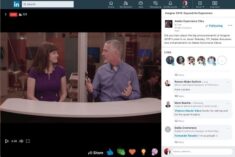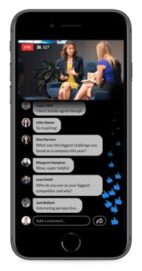Five steps to effective video landing pages
BrightcoveVideo landing pages are an effective part of marketing campaigns. After all, video is the most engaging media out there—and engagement is a key step on the buyer’s journey. But if you’re going to add video to your campaigns, you can’t just slap any video on any landing page and call it a day. Here are five steps to making video landing pages that actually work.
1. Put your video in context
Does your video align with the rest of the content on your landing page? If not, you run the risk of confusing your audience and turning them off. If your landing page is informative and educational, don’t add a video that’s focused on your product. Take a video-first approach in your campaign planning—that means you have video in mind right from the start, then build your landing page around the primary message within that video.
2. Make your video BIG
Have you noticed how screens keep getting bigger? Our phones, tablets, living room TVs and even movie theaters are all getting bigger. Video demands to be BIG, and the same is true for your landing page. Viewers love videos that fill the screen—and the fact is, when it’s big, they’re more likely to click “play.”
3. Put your video front and center
Speaking of filling the screen, your video should be front and center when viewers arrive on your landing page. Do you have a hero banner at the top of your page? Maximize that prime real estate and make it a video. You’ll quickly capture your visitors’ attention and keep it.
4. Choose your thumbnail wisely
There’s a hurdle to your viewers clicking “play” on your videos; they want to know if it’s worth their time before they start watching. You need to tell them exactly what they’re getting right off the bat, and a clear, helpful thumbnail is how you do that. You can even add text so it’s super obvious (example: “Three tips to maximize SEO”). Having a person in your thumbnail also entices viewers to click “play.”
5. Optimize your landing page—including the video
SEO is commonly overlooked with video content—but it shouldn’t be. Video Schema Markup helps search engines crawl your video content and deliver your pages to the right audience in search results. Check out our post on video SEO to learn how it’s done.
Video landing page DON’Ts
We’ve gone over the things you should be doing, but there are also a couple things you should avoid when adding videos to your landing pages.
Autoplay
When people go online, they want to be in control of their experience. When they land on a page and a video starts playing immediately (especially with sound on—yikes!), they’re understandably upset. Don’t set your videos to autoplay. Exception: If you are driving people to your video landing page from an email, autoplay is actually a better experience. Your viewers have already clicked the thumbnail within the email; they don’t want to click again.
Lightboxes
Video lightboxes are pop-ups that take over your webpage. These are just another way of taking control away from your viewers; they can’t scroll away or look at any of your other landing page content while the video plays. Embed your video natively, within the landing page so that your viewers can interact with it however they choose.
Ready to go forth and create your next video landing page? Consider taking it to the next level with an embedded lead form. You can check out my blog post on Hubspot to learn how.





